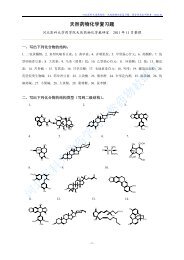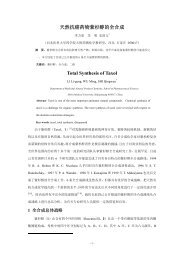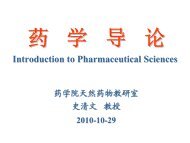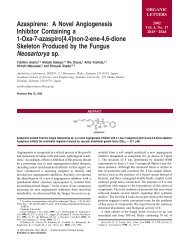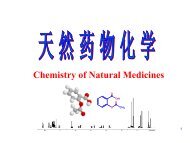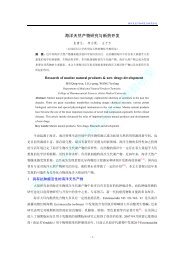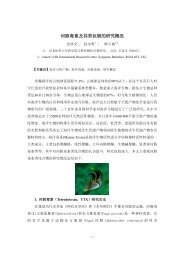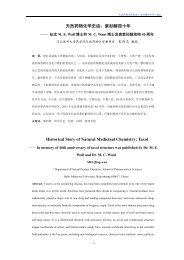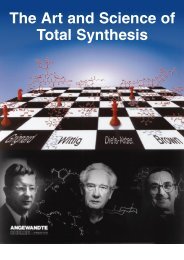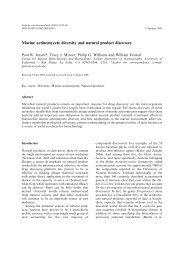Total Synthesis Highlights
Total Synthesis Highlights
Total Synthesis Highlights
Create successful ePaper yourself
Turn your PDF publications into a flip-book with our unique Google optimized e-Paper software.
The next stage of the synthesis was ring oxygenation, to convert 8 into 13. The key to this<br />
transformation was the observation that the amide oxygen of 8 participated in the solvolysis of the<br />
allylic bromide, setting, after hydrolysis, the new secondary stereocenter of 9. Hydroxyl-directed<br />
epoxidation gave 10, which was rearranged with Ti(O-i-Pr) 4 to 11. After some experimentation, it<br />
was found that the derived dione 12 could be reduced to the desired cis diol 13 with LiBr and<br />
LiAlH(O-t-Bu) 3 followed by NaBH 4 /CeCl 3 .<br />
Silylation followed by selenium dioxide oxidation converted 13 into 14. Epoxidation of the<br />
derived TES ether proceeded by addition of oxygen to the more open face of the alkene, leading to<br />
15. Ozonolysis followed by diastereoselective one-carbon homologation provided 17. This set the<br />
stage for intramolecular epoxide opening by the carboxylate, to give 2, in which all of the<br />
stereogenic centers of tetrodotoxin have been established.<br />
Justin Du Bois of Stanford University has put forward (J. Am. Chem. Soc. 2003, 125, 11510. ) a<br />
quite different total synthesis of tetrodotoxin, including an elegant late-stage introduction of the<br />
nitrogen



